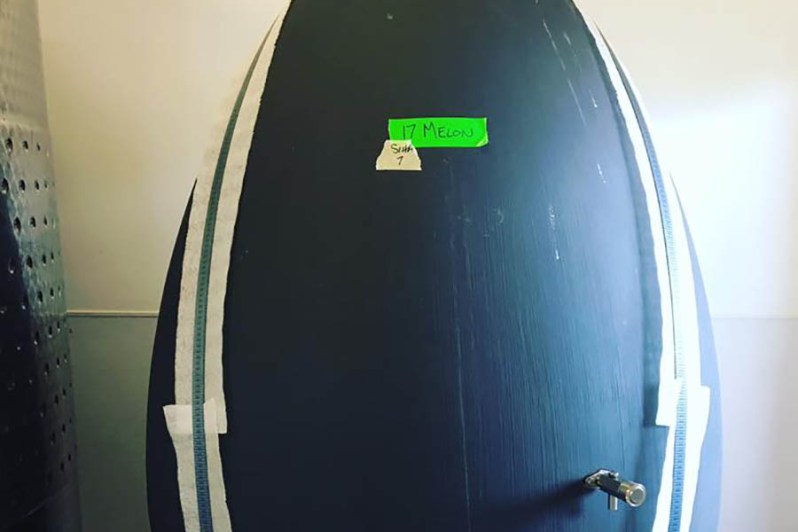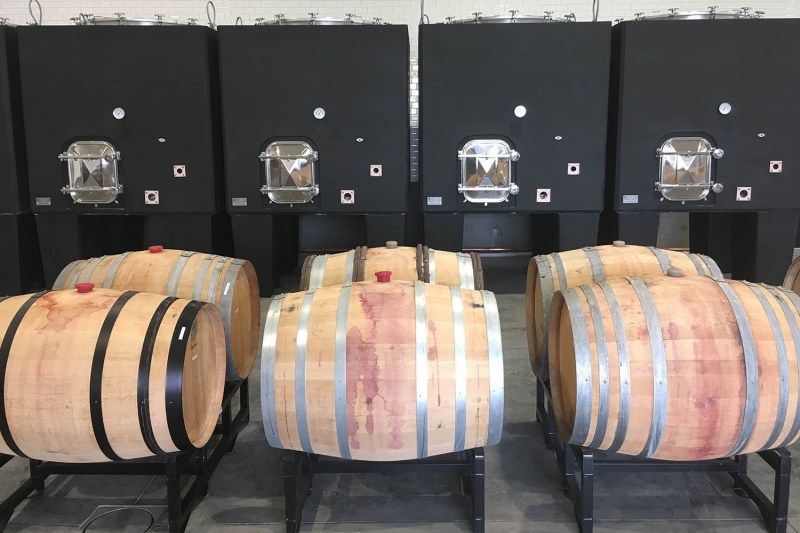For most, cement is the slowly solidifying stuff of funny-looking trucks and sidewalks. For more and more winemakers, though, it’s a useful material that can impart special benefits to an evolving wine.
Like most things, wine likes to breathe. Cement is porous, meaning air is able to permeate the material via countless tiny holes. Vintners look to that moderate interaction with oxygen for improved mouthfeel. Some prefer it to stainless steel, believing that the wines are more lively and dynamic. It’s mostly attractive to makers of white wine, or other styles that involve minimal-to-zero skin contact.
Egg-shaped cement containers have become especially trendy. The bulbous piece of equipment models age-old amphora, resurrected about twenty years ago in France. In the last decade, New World winemakers have looked to such curved vats for the ongoing flow they provide during fermentation, creating a more even liquid mixture while keeping the temperature stable. That kind of balance during one of the most important parts of the winemaking process can yield palate-pleasing magic.

What’s extra cool is that the egg does all of this on its own. A human hand is not required, as the shape creates a vortex that in turn pushes the wine around gently on its own. With zero corners in the vessel and plenty of movement, every ounce of the wine, winemakers argue, is subjected to the exact same conditions. Other vintners believe the yeast is woven into the wine in an improved fashion, compared to traditional vats and open-top fermenters. Others still love the micro-oxygenation at play. They claim you get the same benefits of an oak barrel while preserving the fruit characteristics.
Winemaker Anne Hubatch uses a concrete egg for one of her Melon de Bourgogne, the grape famous for its starring role in Muscadet. She crafts wine for her own label, Helioterra, in her urban Portland winery. “I like the shape and material because it naturally stirs the wine in a gentle manner, leading to greater texture and mouthfeel,” she says. Hubatch believes she gets a slight hit of minerality from the vessel as well, which reminds her of real French Muscadet.
Ian Burch has worked with eggs over his many years in the industry with various Willamette Valley labels. For the current Archery Summit winemaker, employing them depends on what variety he’s using and what he’s going for. “Stylistically, I enjoy eggs if I was going for a rounder, blousier white wine with varieties like Marsanne or Roussanne,” he says. “Going for a more angular, edgier Chardonnay, I tend to like barrel fermentations with a higher lees-to-wine ratio and more predictable pH shifts.”

At least one cement vessel of some form or another is becoming a common site in cellars all over. Labels like Ovum, Lavinea, and Cayuse appreciate what they do to the resulting wines. At Force Majeure’s gorgeous new Walla Walla space, boxy cement fermenters line the walls of the sprawling cellar. Big names abroad, too, are into the movement, such as El Enemigo in Argentina and Domaine de Chevalier in France.
For a wine-drinking public that seems to adore freshness, brightness, and pure fruit characteristics in their collective glass, the concrete vessel is a godsend. It’ll be fun to see what comes out of the pipeline as more young winemakers experiment with the material, whatever its shape.
Editors' Recommendations
- Why you can (and should) add bourbon right to your banana bread batter without cooking it first
- The Bud Light boycott movement comes for Taylor Swift, NFL’s Travis Kelce — this is why
- The 7 best wines to drink this Easter: Elevate your holiday meal
- My Favorite Neighbor is changing up the artisan wine game
- This is How Experts Are Debunking Major Wine Pairing Myths


